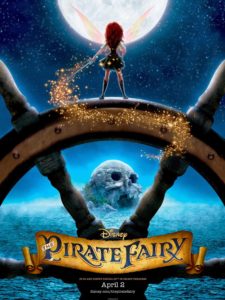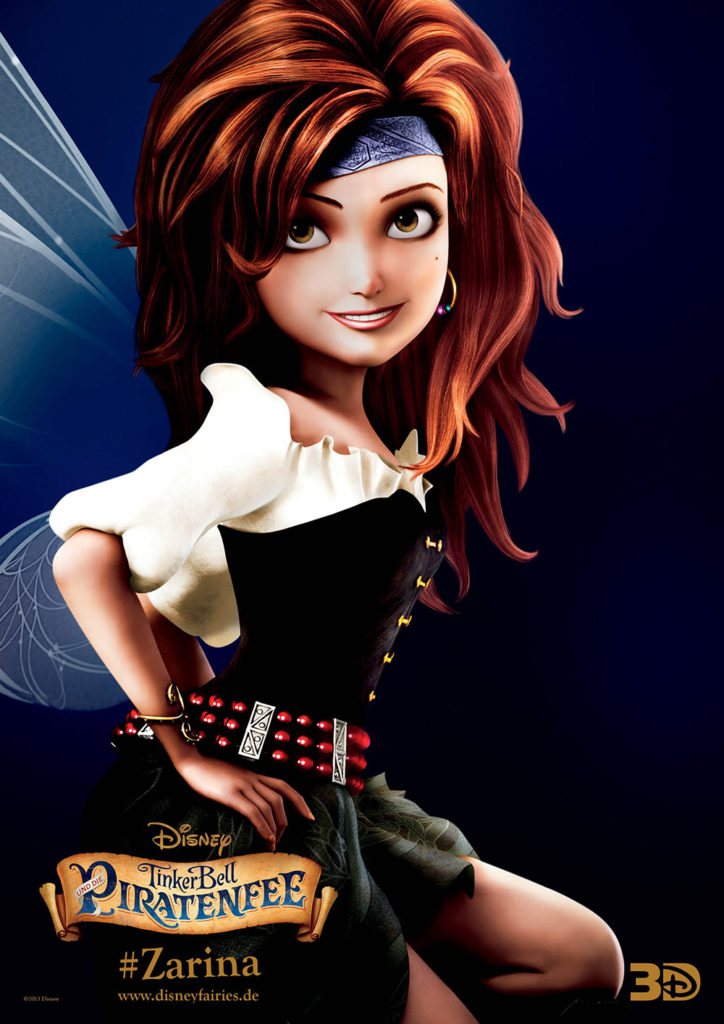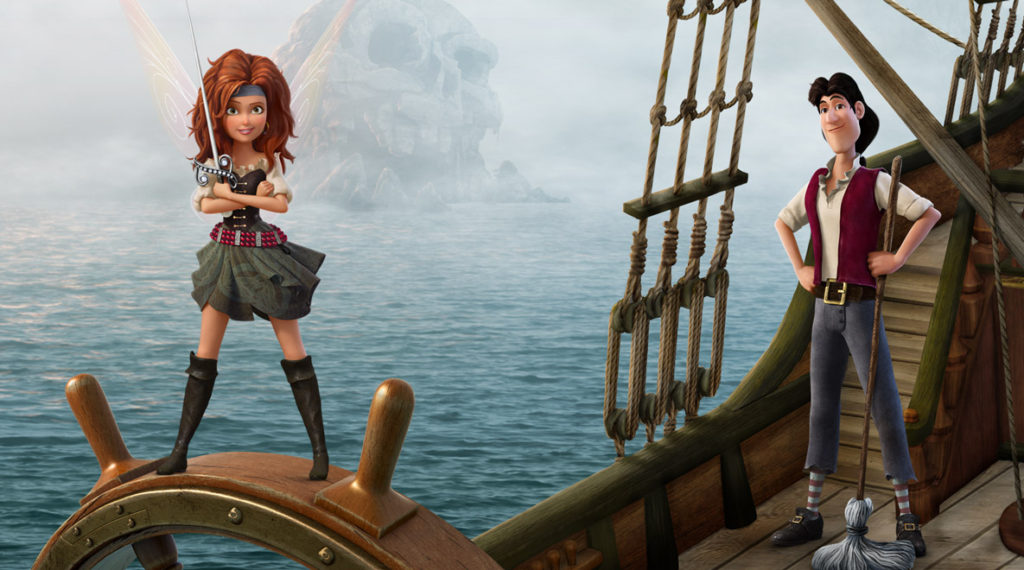Disney Adds A Bit O’ The Pirate Life To Its FAIRIES Franchise
DIRECTOR: PEGGY HOLMES/2014
 The Pirate Fairy is the fifth film in Disney’s Fairies series, and the first to not feature Peter Pan’s perennial sidekick Tinker Bell as a main character (which is presumably why her name is left off the title this time around). And yet, it’s also the entry that functions the most like a true Peter Pan prequel—setting up a lot of the elements from that animated classic, including the pirates and the ticking crocodile. For my money, The Pirate Fairy also might be the best DisneyToon Fairy movie yet, although it’s a close race—these movies are a lot more solid than most folks probably realize.
The Pirate Fairy is the fifth film in Disney’s Fairies series, and the first to not feature Peter Pan’s perennial sidekick Tinker Bell as a main character (which is presumably why her name is left off the title this time around). And yet, it’s also the entry that functions the most like a true Peter Pan prequel—setting up a lot of the elements from that animated classic, including the pirates and the ticking crocodile. For my money, The Pirate Fairy also might be the best DisneyToon Fairy movie yet, although it’s a close race—these movies are a lot more solid than most folks probably realize.
Initially I wrote these flicks off as cheap DTV cash-ins on a property that Disney had the rights too—grist for the money mill, as it were. But upon finally watching them on Netflix with my infant son, I discovered that there’s more that meets the eye in Pixie Hollow. They may not be as glossy as their big-budget contemporaries, but these films nonetheless feature solid animation, voice work, and storylines. What’s more, they teach really valuable lessons—creativity, friendship, sisterhood, humility, etc., in a more subtle and less cloying way than, say, Veggie Tales, for example. And one area in which the fairies have the talking vegetables beat is in a positive depiction of feminism. While I initially had a bit of a negative gut reaction that my son loved these movies so much—a latent purging of the misogynistic impulses programmed into my upbringing, stepped in culturally specific gender-norms, if you will—when that moment passed I was really happy that he was engaging with such positive female characters who pass both the Bechdel and the Mako Mori tests with flying colours.

Which brings us to the new fairy in town—Zarina (Christina Hendricks), a dust-keeper fairy with some big ideas. She starts out as a cog in the pixie dust machine, working on an assembly line, but in her off time she does illegal and illicit experiments to create new kinds of pixie dust. But this is a big no-no in Neverland, and her experiments bring down the wrath of Zarina’s boss, the portly Scottish Fairy Gary.
(For those of you who are uninitiated into this series, there’s a kind of conventional genetic determinism at work in this world, where different faeries are born with different “talents,” that essentially lock them in to lifelong careers they have no say in choosing. The first film in the series features Tink trying to break out of her predetermined classification as a “tinker fairy,” but she ends up accepting who she is by the end.)
Since Zarina is a new character, she doesn’t carry the baggage that Tinker Bell did—we already knew that she was a “good girl” (as my 2-year old calls her). But Zarina doesn’t have that baggage, so she gets to cut loose and have a little more fun, which means we as an audience get to have a little more fun with her. When Tinker Bell showed up on the scene, she got to push the envelope a little bit—but Zarina takes it to the next level. There’s a bit of the punk-rock anarchist in her—she’s rocking the boat; challenging the fatalism of the talent guild system, and at one point I even thought she was gonna bring the whole system crashing down just for chaos’ sake, Joker-style (she didn’t, but that would have been kind of cool).
In a way, much like Gary King in last year’s The World’s End, Zarina functions as both protagonist and antagonist in the film. We’re with her at first, excited to see what she can do, hoping to see her shake things up a good bit, until she takes it too far and we need to see her brought back from the edge. See, the faeries in Pixie Hollow don’t see the value of her genius. But rather than fall in line like a good faerie, Zarina takes her ball—meaning in this case, the invaluable blue pixie dust that makes all faerie life possible—and goes home—meaning, she leaves Pixie Hollow entirely and joins up with a band of scurvy pirates.
She forms a close bond with one of those pirates, a cabin boy named James (Tom Hiddleston). James is the only pirate who can understand Zarina (to human ears, Faerie speech sounds like tinkling bells)[1], and so they form a symbiotic relationship through which she ends up captaining the pirate ship. Of course, James might be hiding secrets of his own, but that would be telling.

Zarina and James
What I can tell you is that Hiddleston, the erstwhile god of mischief himself, does a fine job voicing James—he even gets to sing at one point! Like all the Disneytoon Faerie movies, the voice cast is great all around, and the addition of these two new eminently sexy actors (Hiddleston and Hendricks) to the established voice cast is more than welcome. I hope this isn’t the last we see of either of these new characters—especially as a new faeries movie is supposed to debut sometime later this year.
[1] It’s implied that this is because of his Eaton education.

